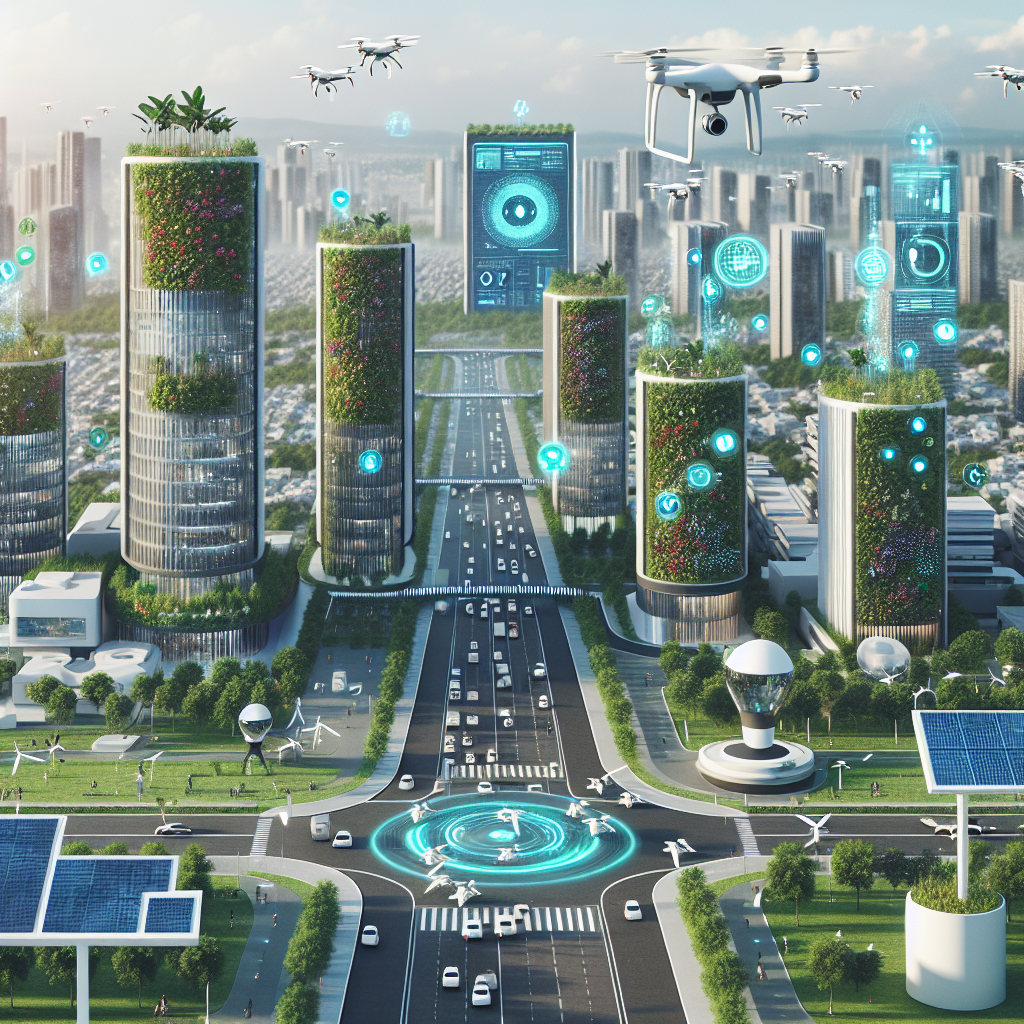The Role of AI in Sustainable Urban Planning
The unprecedented growth of urban areas across the globe has brought to the forefront the critical need for sustainable urban planning. As cities continue to expand, the challenges related to environmental sustainability, efficient use of resources, and ensuring a high quality of life for residents become increasingly complex. In this context, artificial intelligence (AI) emerges as a transformative tool that can significantly enhance the planning, development, and management of sustainable urban environments.
Understanding AI in Urban Planning
Artificial intelligence, in the realm of urban planning, involves the use of machine learning, data analytics, and computer algorithms to analyze vast amounts of data related to urban environments. This data can range from traffic patterns, energy consumption, and waste management to air quality, water usage, and the social dynamics of neighborhoods. By harnessing AI, urban planners can gain a deeper understanding of the intricate web of factors that influence the sustainability of urban areas, enabling them to make informed decisions and create more effective strategies.
Enhancing Environmental Sustainability
One of the primary roles of AI in sustainable urban planning is its ability to optimize the use of natural resources and minimize environmental impact. For instance, AI can be used to develop smart energy grids that more efficiently distribute electricity based on real-time demand and supply, significantly reducing energy waste. Similarly, AI-driven systems can manage water resources more effectively, predicting demand patterns, and identifying leaks or inefficiencies in the distribution network.
Moreover, AI can play a crucial role in improving air quality and reducing greenhouse gas emissions. Through the analysis of traffic data and emissions, AI can help design urban mobility solutions that reduce congestion and promote the use of cleaner, alternative modes of transportation. This not only contributes to a reduction in pollution but also enhances the overall livability of urban areas.
Promoting Resource Efficiency
Beyond environmental sustainability, AI also promotes resource efficiency in urban planning. By analyzing data on building energy usage, AI can identify opportunities for energy savings and recommend retrofitting or construction strategies that optimize energy efficiency. This is particularly relevant in the context of the global push towards net-zero buildings and the reduction of urban carbon footprints.
Additionally, AI can streamline waste management processes in cities. Through the analysis of waste generation patterns, AI can optimize collection routes and schedules, reducing fuel consumption and emissions associated with waste collection. It can also contribute to the development of more effective recycling programs by identifying the most significant sources of recyclable materials and suggesting strategies to increase recycling rates.
Improving Quality of Life
Ultimately, the goal of sustainable urban planning is to improve the quality of life for city residents, and AI plays a key role in achieving this objective. For example, AI can enhance public safety by analyzing crime data and predicting areas with higher risks, enabling law enforcement to allocate resources more effectively. Additionally, AI-driven urban design can create more livable and accessible public spaces, promoting social interaction and community cohesion.
AI can also address health-related issues in urban environments by monitoring air and water quality, predicting outbreaks of diseases, and identifying environmental factors that may impact public health. This proactive approach to health and safety can significantly improve the overall well-being of urban populations.
FAQs
Q1: How does AI contribute to sustainable urban mobility?
A1: AI contributes to sustainable urban mobility by optimizing traffic flows, reducing congestion, promoting the use of public transport, and facilitating the adoption of electric vehicles through smart charging networks.
Q2: Can AI help in combating climate change in urban areas?
A2: Yes, AI can help combat climate change by optimizing energy use, reducing emissions from transportation and buildings, and supporting the integration of renewable energy sources into the urban grid.
Q3: How does AI enhance public safety in cities?
A3: AI enhances public safety by analyzing crime data to predict high-risk areas, optimizing the allocation of law enforcement resources, and monitoring public spaces for potential safety threats.
Q4: What are the limitations of using AI in urban planning?
A4: Limitations include the need for large datasets, the potential for biased algorithms if not carefully managed, privacy concerns related to data collection, and the need for interdisciplinary expertise to effectively integrate AI into planning processes.
Q5: How can cities ensure the ethical use of AI in urban planning?
A5: Cities can ensure the ethical use of AI by establishing clear guidelines for data privacy and security, adopting transparent decision-making processes, engaging with diverse community stakeholders, and continuously monitoring and evaluating AI systems to prevent biases and unintended consequences.
Conclusion
The integration of artificial intelligence into sustainable urban planning offers a promising path towards creating more livable, resilient, and sustainable cities. By harnessing the power of AI, urban planners can tackle complex environmental challenges, optimize the use of resources, and improve the quality of life for urban residents. However, it is essential to approach the deployment of AI in urban planning with a focus on ethical considerations, ensuring that the benefits of technology are equitably distributed across all segments of society. As we move forward, the thoughtful and strategic application of AI in urban planning will be crucial in shaping the sustainable cities of the future.

